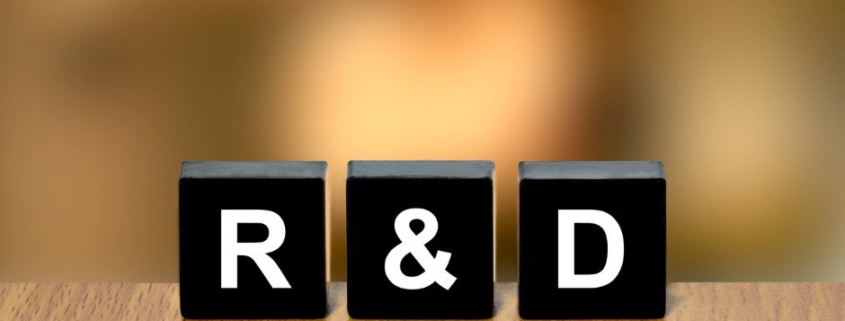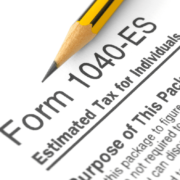Research Credit Available as a Payroll Tax Credit Doubled
- Learn how the Inflation Reduction Act could offer a boon to qualified small businesses.
- Find information about the Research Credit Payroll Tax Option.
- Learn about the research credit.
- Find out which expenditures qualify for the research credit.
- Learn the criteria to become a Qualified Small Business.
- Find out how to make the election.
The Inflation Reduction Act that President Biden signed into law in August of 2022 has a provision that could benefit many small business startups. It could allow them to potentially double the amount of the research and development tax credit that can be used against payroll taxes from $250,000 to $500,000 per year.
This little-known tax benefit for qualified small businesses is the ability to elect to apply a portion of their research credit – up to $500,000 for years beginning after December 31, 2022 – to pay the employer’s share of their employees’ FICA withholding requirement (the 6.2% Social Security tax and the 1.45% Medicare hospital insurance tax). This is double the amount allowed under prior law. This can be quite a benefit. In their early years, start-up companies generally do not have any taxable profits for the research credit to offset. Quite often, it is in these early years when companies make expenditures that qualify for the research credit. This can substantially help these young companies’ cash flow.

Research Credit
The research credit is equal to 20% of qualified research expenditures in excess of the established base amount. If using the simplified method, the research credit is equal to 14% of qualified research expenditures in excess of 50% of the company’s average research expenditures in the prior three years.
Qualified Research
Research expenditures that qualify for the credit generally include spending on research undertaken for the purpose of discovering technological information. This information is intended to be useful in the development of a new or improved business component for the taxpayer relating to new or improved functionality, performance, reliability or quality.
Qualified Small Business (QSB)
To apply the research credit to payroll taxes, a company must be a QSB and must not be a tax-exempt organization. A QSB for purposes of this credit is a corporation or partnership with these criteria:
- The entity does not have gross receipts in any year before the fourth preceding year. Thus, QSBs can only take the payroll credit in the first 5 years of the entity’s existence. However, this rule does not require a business to have been in existence for at least 5 years.
- The entity’s gross receipts for the year when they elect the credit must be less than $5 million.
An individual (sole proprietor) qualifies as a QSB if that person meets the two requirements above after taking into account the person’s aggregate gross receipts received for all the person’s trades or businesses.
Example
The taxpayer is a calendar-year individual with one business that operates as a sole proprietorship. The taxpayer had gross receipts of $4 million in 2023. For the years 2019, 2020, 2021, and 2022, the taxpayer had gross receipts of $1 million, $7 million, $4 million, and $3 million, and did not have gross receipts for any taxable year prior to 2019. The taxpayer is a qualified small business for 2023 because he had less than $5 million in gross receipts for 2023 and did not have gross receipts before 2019 (before the 5-taxable-year period ending with 2023). The taxpayer’s gross receipts in the years 2019-2022 are not relevant in determining whether he is a qualified small business in taxable year 2023. Because the taxpayer had gross receipts in 2019, the taxpayer will not qualify as a small business for 2024, regardless of his gross receipts in 2024.
How to Use the Research Credit to Offset Payroll Taxes
The research credit must first be accrued back to the preceding year. There you must use it to offset any tax liability for that year. Then, you can use the excess, up to $500,000 maximum (or a maximum of $250,000 in years before January 2023), to offset the employer portion of the payroll tax. Any amount not used carries forward to be used against the payroll tax in subsequent quarters.
To make the election, a qualified small business uses Section D of Form 6765, Credit for Increasing Research Activities. The taxpayer must attach this to their timely filed (including extensions) original income tax return. The taxpayer must make the election annually and must specify the amount of the research credit covered by the election. A partnership or S corporation must make the election at the entity level. The election may not be revoked without IRS consent.
Taxpayers compute the payroll tax credit amount on Form 8974, Qualified Small Business Payroll Tax Credit for Increasing Research Activities. They then file this with the payroll tax return (usually Form 941) on which they claim the credit.
When you can use the credit
The payroll tax credit is allowed for the first calendar quarter beginning after the date the taxpayer files the return on which the election was made. Thus, the expanded payroll tax credit derived from the R&D credit won’t show up until 2024 when the 2023 tax returns on which the election is made are filed. A taxpayer filing annual employment tax returns claims the credit on the annual employment tax return that includes the first quarter beginning after the date they file the election.
Have questions related to the research credit or if your business could benefit from using the credit to offset payroll taxes? Call Fiducial at 1-866-FIDUCIAL or make an appointment at one of our office locations to discuss your situation.
Ready to book an appointment now? Click here. Know someone who might need our services? We love referrals!









